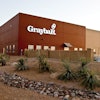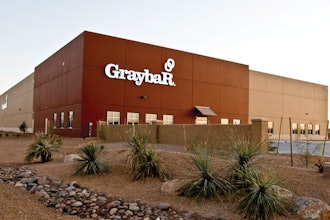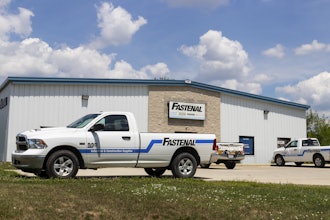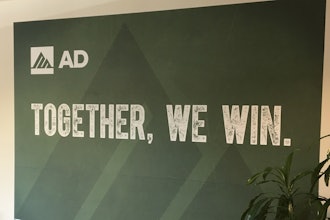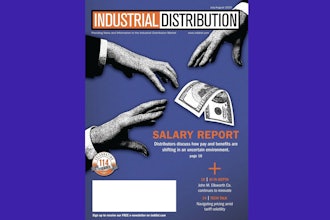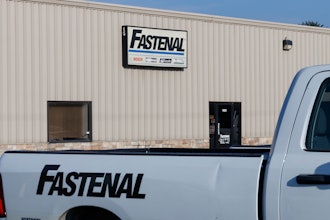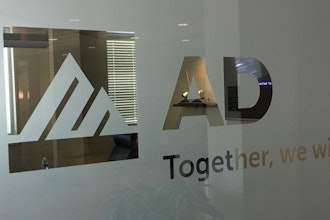
Insert a 25-year-old, working for a fifth-generation manufacturers’ representative firm established in 1889, who’s only been in sales shy of three years. Clearly, I’m very qualified to talk about what an organization looks like now versus “then”, and defining “modern” is on behalf of a 130-year-old company.
My name is Kayla Jane, and I work for a manufacturer’s-rep, leading a team of seven across customer service, e-commerce sales, warehousing, along with any other opportunity we refuse to say no to. And while it sounds like we mainly sell products, we also sell our manufacturers on services and our distributors on reliability, availability and world-class customer service.
Our president and owner, Jim Surpless, often claims Surpless Dunn to be the 130+ year “start-up” — which is the exact mentality all organizations need. If you’re not first, you’re last? If you’re not the first one at the starting line, breaking the first place records and then training to compete again immediately after, you’re last.
My mom sells advertising, and has been for over 40 years. Growing up, I noticed she always, always won her business by offering the most competitive price. She’d negotiate, compare rates, offer discounted contracts — do whatever it takes to land the sale, primarily focusing on the bottom line to her customers. And that’s why she’s been SO good at her job for 40 years.
But as much as I love her, I’d have to argue that the modern sales organization needs to operate differently. Below are four points I’ve come to identify as critical features of a modern sales organization.
Speed of Information
We all want great prices, same-day shipping (preferably free), widespread availability, sufficient quantities and convenience. But let’s not forget this first: the customer wants information, even if the product isn’t available. We want to know things, and we want to know now. In a world where you can access the weather within less than a second without pushing a button (Hey Siri), we’ve applied that expectation to all technologies and find ourselves frustrated when something isn’t available. We want live chats from online stores, customer service phones with real people, Wi-Fi at every corner and, perhaps, an iPhone battery that never dies.
Compare and Control
As the world identifies more strategies, resources, and beyond, we become a more competitive marketplace. And these competitors make their offerings known. You have access to this information. Take this to your advantage. Compare your pricing, lead times, product features and workforce, but do not stop there. Then take control. Be ready to answer the questions from customers when another seller offers a better price. Be ready to define the benefit of your feature, or the disadvantage of another. Not only will this control help secure the sale, but being ready to define why your organization is comparably better than other, will demonstrate a level of professionalism (that nowadays, is expected.)
A Business with Integrity
Believe it or not, a professor once told me, “Sometimes to be strategic, don’t exactly lie to your customer, but you don’t need to tell the whole truth.” Hmmm. In my humble three-ish years, I’ve found much more success in telling all of the news. The customer respects the integrity of your team, and while you may have lost the sale, you did not lose the trust. What really matters?
On a similar note, news travels rather quickly nowadays. And yes, there is such a thing as bad PR. Businesses of similar industries talk. It starts with culture and cultivating an environment that stays true to the values of the business, the needs of the customer and the expectations of your providers (manufacturers in my case). Hold true to your purpose, be cognizant of the “face” of your company, remind your team of their incredible value and let that value build credible, sustained, integrity.
Always, Always Ask
This goes far beyond the modern sales organization — a tale as old as time: “Everything is a no until you ask.” The value is exponentially more important nowadays though as consumers gain leverage. From your vendors and suppliers, to your coworkers with unique knowledge sets, to your customers, distributors and end users. My team can attest — I’ll question any “no quote” sent to our customer. Did you ask the customer if they are interested in another product? Did you ask if they received a better price? Did you ask what the use-case is? Did you offer future services even with a no quote now?
Assumptions are dangerous, and we often find we are not asking questions because we assume we know the answer. As much as we like to believe, myself very-included, that we know everything, there is never harm in swallowing our pride just a notch to ask. Worst case, the response is still “no”, at which point we tackle the next opportunity.
The Final Word
So I’m sorry mom, but the modern sales organization does not necessarily need the best price, or the latest in innovation. It’s as if the modern-day consumer absolutely loves technology — the speed, the options, the availability of information — but also, because of so much technology, has lost touch. The modern customer further seeks the human traits of integrity, genuineness and services going above and beyond for a need. Real people delivering real offerings.
In conclusion, I’d suggest the above points stem far beyond the organization and to the individual. The team consisting of players who — in all things beyond the  Kayla Jane McLaughlin
Kayla Jane McLaughlin
Kayla Jane McLaughlin is director of inside operations at Surpless Dunn & Co., a manufacturers' rep firm representing suppliers in abrasives, cutting tools, hand tools, power tools, chemicals, work holding, metrology and inspection tools. She leads the company's inside sales, warehouse, and IT teams.


